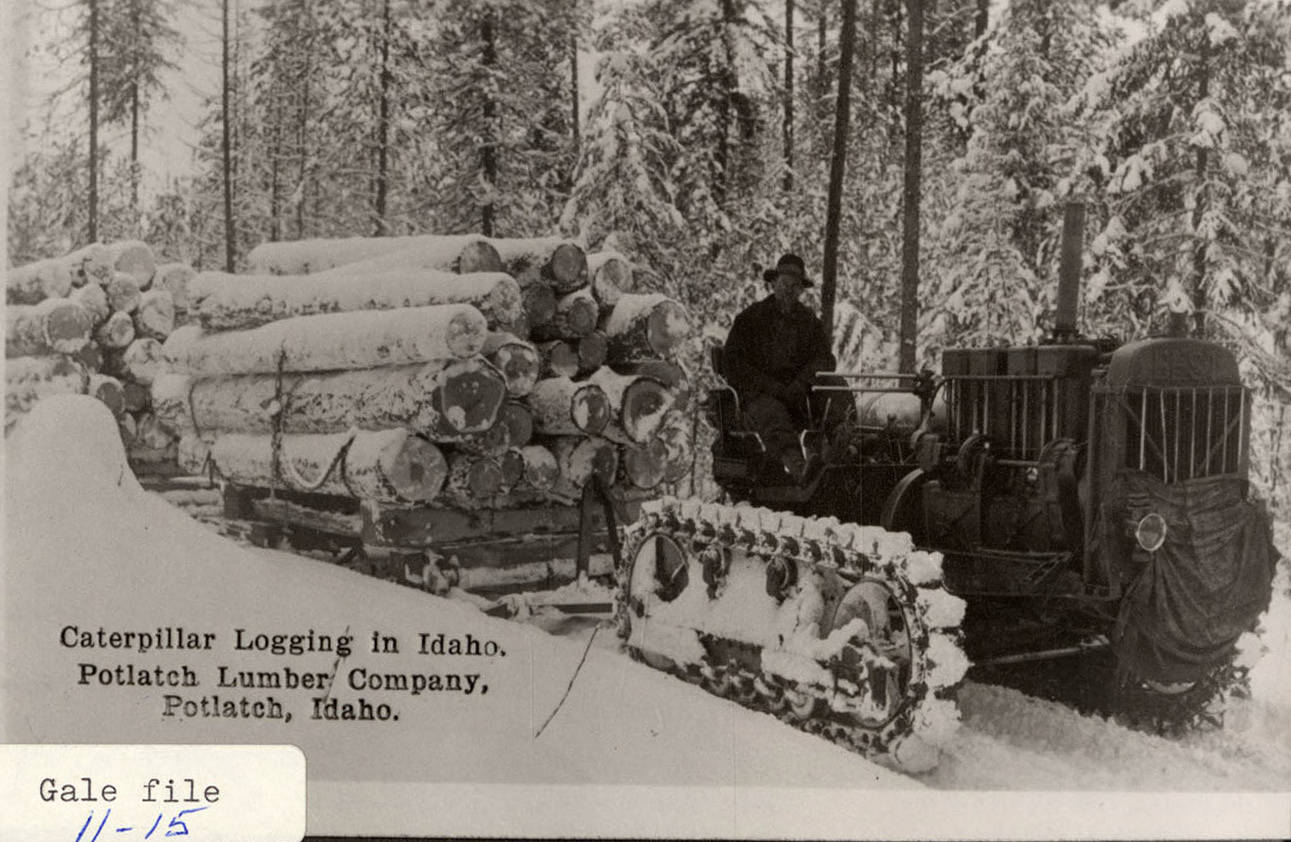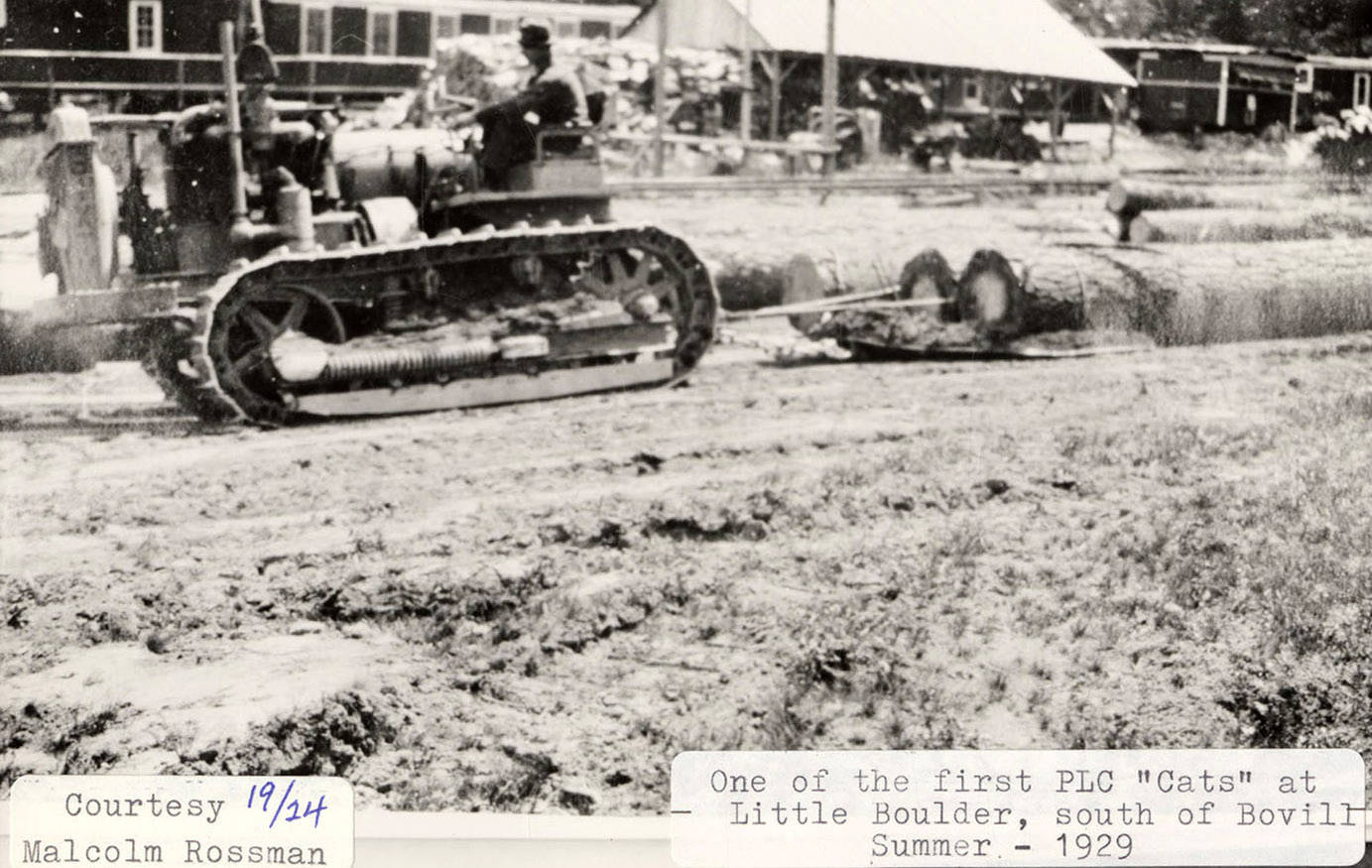Last week, we learned about jammers. This week, we’ll learn about the tractors that largely replaced other forms of transporting logs, including manual horses and steam donkey engines (which we covered in previous weeks!). These tractors were colloquially referred to as “crawlers,” “cats,” and “caterpillars.”
As early as the 1920s, crawlers were presented to the logging industry as gasoline-powered mechanical alternatives to manual horses, using less animal power and more automated technological power. Although crawlers weren’t invented and designed specifically for logging, they were extremely beneficial to the industry due to their many uses.1
Although automated machines are designed to make certain tasks easier for humans, they also present other challenges, such as the issue that “all of the dust it takes to ruin a [crawler engine] can be balanced on a thumbnail,” meaning they required diligent and routine maintenance.
Stay tuned for next week’s Logging Lessons where we’ll discuss transporting logs with the natural forces of water!
Sources
Photo courtesy of Potlatch Historical Society Collection
-
Box 3, Folder 41, MG 482 (Craig Mountain Forest Protective District Records), University of Idaho Library, Special Collections &Archives, Moscow, Idaho. American Pulpwood Association, Small Crawler Operator’s Handbook, undated. ↩



